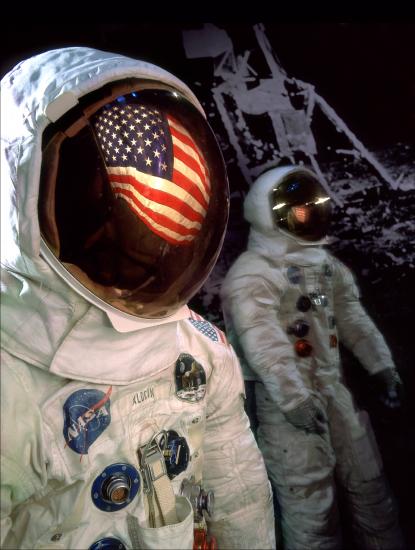
Media Inquiries
Public Inquiries
Thirty-five years after the first humans walked on the moon, the National Air and Space Museum will remember the Apollo 11 mission on July 20 with a day of special presentations.
The museum's flagship building on the National Mall in Washington will offer a series of special "Curator's Choice" walking tours of artifacts related to the July 1969 spaceflight. The Mall building is home to the Apollo 11 command module Columbia; an Apollo lunar module; the Apollo spacesuits worn by astronauts Neil Armstrong, Buzz Aldrin and Michael Collins; and dozens of tools, charts and personal items used by the crew.
The tour at 11 a.m. will focus on Apollo spacesuits; the tour at 1 p.m. will place the mission in historical context; the tour at 2 p.m will present the hardware used in the mission and the tour at 3 p.m. will cover the science of Apollo.
The museum's new Steven F. Udvar-Hazy Center in Chantilly, Va., will also mark the anniversary of the first moon-landing with special docent-led tours at 11 a.m. and 1:30 p.m.
The Udvar-Hazy Center is home to the Apollo 11 Mobile Quarantine Facility, which housed the crew in a sealed environment upon their return to Earth. Several other Apollo-related artifacts are also previewed in the center's aviation hangar before being moved for permanent display in the center's James S. McDonnell Space Hangar this fall.
The Udvar-Hazy Center, which opened Dec. 15, 2003, is located near Washington Dulles International Airport. The National Air and Space Museum building on the Mall is located at Sixth Street and Independence Avenue S.W. Both facilities are open daily from 10 a.m. until 5:30 p.m. (Closed Dec. 25.) Admission is free but there is a $12 fee for parking at the Udvar-Hazy Center. Shuttle bus service runs between the facilities with a roundtrip ticket costing $7 (group discounts are available).



